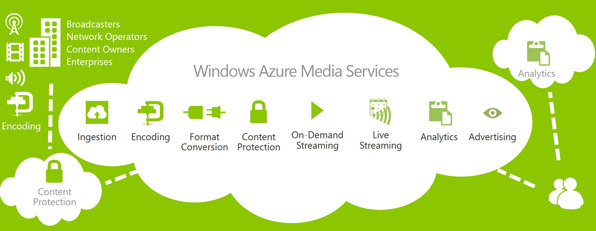Networking is an important aspect to take into account when you’re considering cloud servers and things like that. Windows Azure has a vast amount of datacenters located all across the world, from the United States to Europe and Asia. This means that you can actually choose which location you would like your data to be stored at when it comes time to do so, you’re not even limited to using just one of the datacenters. The process of connecting to these datacenters can vary, because there are multiple ways of doing so, which are:
- Using Windows Azure Virtual Network to connect a personal (most likely on-premises) local network to your Azure Virtual Machines.
- If you’re using multiple datacenters, you’re going to want to keep it organized. You can use Windows Azure Traffic Manager to manage the requests that users are making in an orderly fashion (smoothly and efficiently).
The use of a cloud server can be optimized even more in order to treat it as another “wing” (so to speak) of your own datacenter. You have the ability to add Virtual Machines to the Virtual Network whenever you please, as well as remove them at will. This means you don’t necessarily always need to have computing power available, as sometimes it won’t really be needed. Also, since Windows Azure Virtual Machines allow you to create your own personal VM’s while running the SharePoint program (including Active Directory and any other software you may use on-premises) the approach itself should work with any applications you’ve already gotten ready.
If you want to make this as useful as possible, you’re going to want to let your users treat this applications like they were running in your own personal datacenters. Windows Azure Virtual Network allows for easy implementation of this, all you’ve got to do is make use of VPN gateways and set-up a personal Virtual Network. Whenever you assign your own IP (v4) address to your cloud servers Virtual Machines, it appears as if they’re on your own network. After this users can access them and the VM’s contained within as if they were being ran locally.
Traffic Manager is an application that helps those with a massive user database sort everything out. When you’ve got a massive amount of people using your cloud server it’s a good idea to have multiple datacenters, but some people don’t. If you do however, it’s hard to keep a quality server up and running without a program to sort all of the traffic out. If somebody is from Europe and find themselves connecting to a US datacenter something is obviously off; Traffic Manager is a piece of software that finds the most suitable datacenter for a user and connects them to it. It goes through a process if one isn’t available and it connects them to the next best one they’ve got ready for the user.



